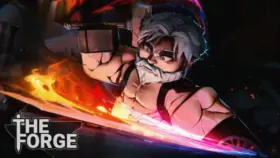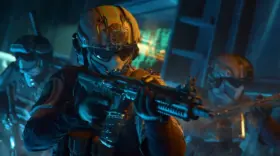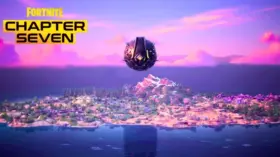Disney Lorcana is an incredibly fun card game once you get going. With familiar Disney faces, unique gameplay mechanics, and a victory system that prioritises strategy over attacking opponents, there’s plenty for players of all experience levels. That said, once you’ve mastered the basics of Lorcana and played through a range of the latest Starter Decks, you might be looking for something more. You might be looking for added challenge, or the chance to take on your opponents with far more powerful moves.
To that end, it might be time to build your very own custom deck.
In some trading card games, this is a daunting prospect. But it’s still fairly simple to make a custom deck in Lorcana for a range of reasons: the rules are made clear and simple, and the game doesn’t have an overwhelming array of baked-in mechanics just yet. In fact, once you understand gameplay in Lorcana, brewing a deck is quick and easy.
Here’s how to get started.
Disney Lorcana: Basic rules for custom decks
There are three basic rules you need to follow when building a deck for Disney Lorcana:
- Your deck must be comprised of 60 cards.
- Your deck can only comprise cards of two different ink colours (Amber, Amethyst, Emerald, Steel, Ruby, Sapphire).
- You can only have up to four copies of the same exact card.
These are the defining rules that make a deck “legal” but it’s important to note there are further considerations to be made when creating a functional, powerful deck. You can certainly go off vibes and just choose your favourite characters, but you’ll want to consider more strategic selection if you’re keen to play Lorcana well.
Disney Lorcana: How to choose your two ink colours
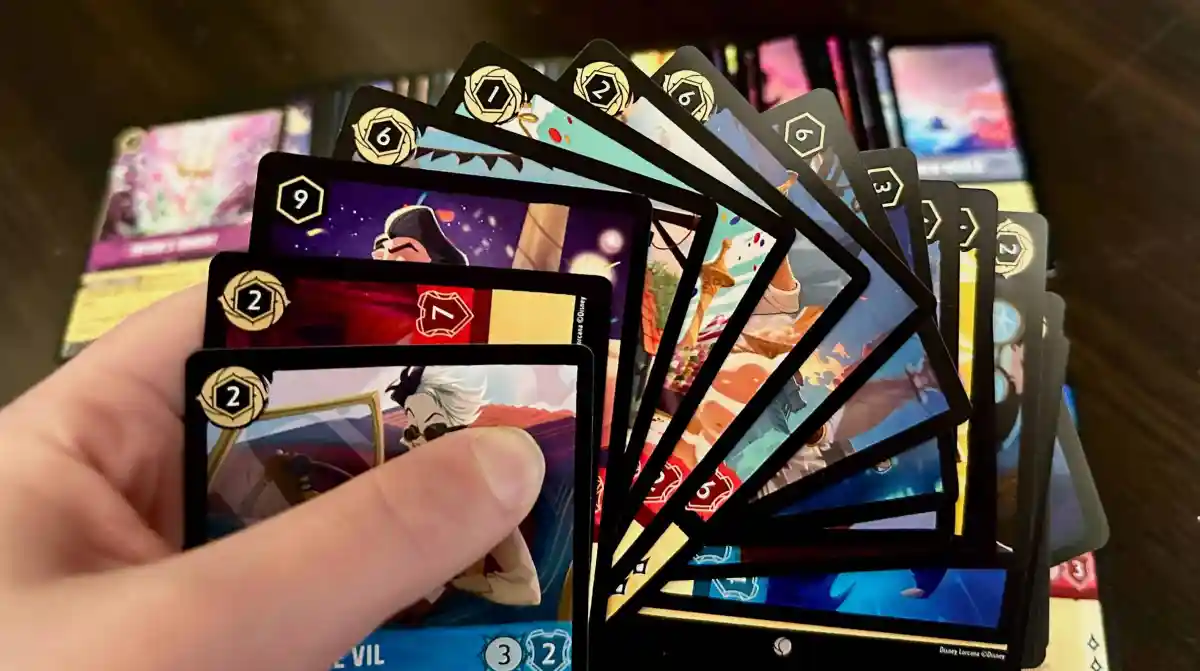
Before you even pick up your first cards, you’ll want to consider what sort of deck you’ll build. Do you want it to be populated by your favourite characters? If so, you’ll need to check which colours they are, and which two colours will get you the biggest batch of favourites. I desperately wanted Magica de Spell in my deck, and I also loved cards from Steel (Hades), Emerald (Morph), and Amethyst (Stitch, Rock Star). I could only have two colours, so I went with Amethyst and Steel.
Read: Disney Lorcana: Shimmering Skies is the quiet before the next storm
The other option for building a deck is purely to pursue power – in which case, you’ll need to mix and match your two ink colours, based on ability preference. Amethyst cards are usually magic-focussed, Amber relates to healing and protection, Steel and Ruby cards tend to have higher challenge power, Sapphire is more strategy-focussed, and Emerald is a bit of everything.
For hard-hitting decks, you might like to combine Steel and Ruby. Amber and Ruby would also pair nicely, for challenge and healing abilities. Or, you can just go for whatever is prettiest. There’s plenty of room to move with these card types, and plenty of opportunities to be creative.
Disney Lorcana: How to make strategic card choices
With your colours locked in, you can start picking cards. As mentioned, choosing your favourite characters is perfectly fine, and you’ll still have a functional deck even if you’re picking one-off heroes and villains you just really, really like. But when you start putting your deck together, you should consider additional factors.
Do you have enough cards that can be flipped for ink? If there’s no golden circle around a character’s cost, they are only a character card, and can’t be played for ink. I’d estimate a good mix would be having 2/3rds of your deck able to be flipped for ink, so you always have these cards handy.
Do you have a mix of costs on your cards? If your deck is only full of high-powered cards, you won’t be able to do anything for your first few turns. To ensure your deck is balanced, and there’s a chance you’ll be able to play cards on your first turns, you need to have a mix of 1-3 ink cards, and 4+ ink cards. If that means sacrificing some of your favourites for functionality, then you might need to consider it. In the end, the game is about earning lore, and even lesser-powered characters will help with that.
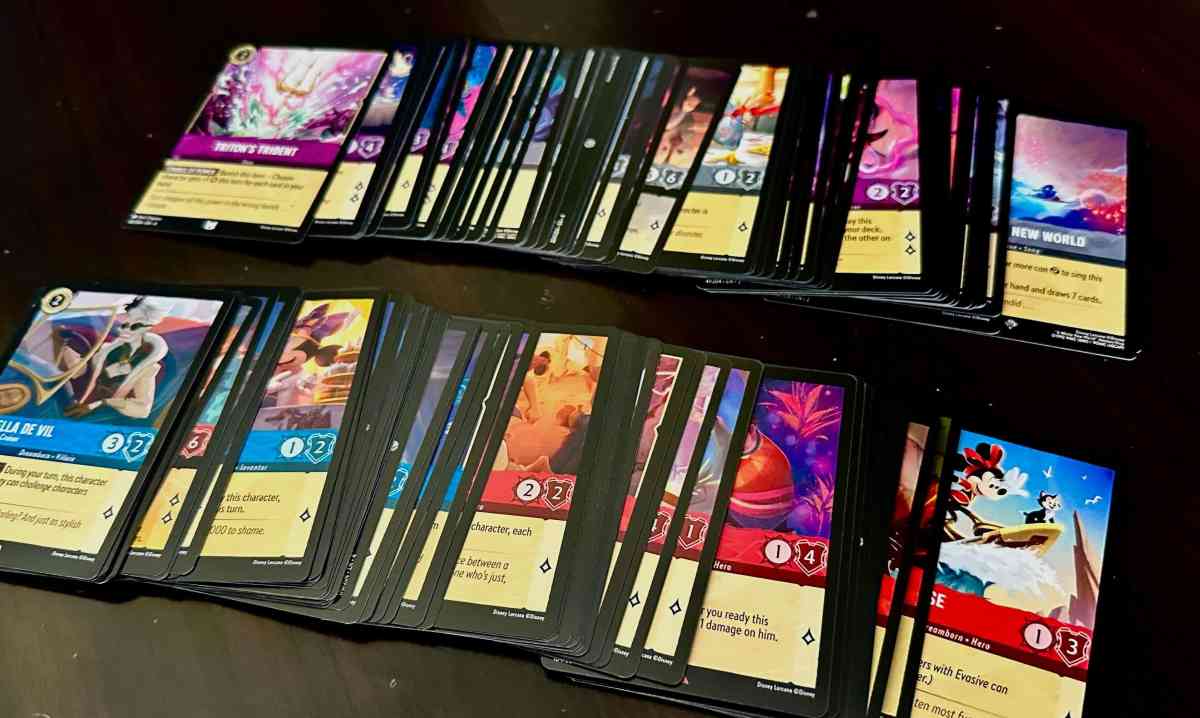
Do you have synergies in your deck, and are you making the most of character abilities? Rather than placing any cards you like in your deck, you should first read the character’s abilities to figure out if they have any additional synergies with other cards. For example, if you’re picking Hades, he lets you ready Titans in your deck. If you don’t have Titans in your deck, he’s simply a strong challenger and lore earner – so you’ll need to put a few Titans in to strengthen his inclusion. Many of the Dwarves from Snow White also have shared synergies that only activate for other Dwarves, so it makes sense to put them together.
You should also consider this for any card with Shift on it. While you can play Shift cards standalone, you can play them at a reduced cost when you’ve got a base version of that character in your deck. You won’t always get to play Shift characters for this reduced cost, as you’ll need to draw and play those base characters first, but it’s still worth considering whether or not to put Shift characters (or their base counterparts) in your deck.
Finally, you should also consider what buffs and boosts you have available in your deck. You can simply put character cards in and make a perfectly functional deck, but you might like to consider adding Items, Actions, Songs, or Locations to help you spice things up. Locations feel particularly essential, as they allow you to gain passive lore each turn, but the right Items, Actions, and Songs can also boost your rise to the top – so consider making room for some handy buffs.
With all this considered, you’re ready to make your first Disney Lorcana custom deck. You may need to experiment to find your favourite cards, but once you’ve learned the basic rules of deck-building, the world of Disney Lorcana is your oyster.
Disney Lorcana cards were provided to GamesHub by Ravensburger for the purposes of covering new set releases.



